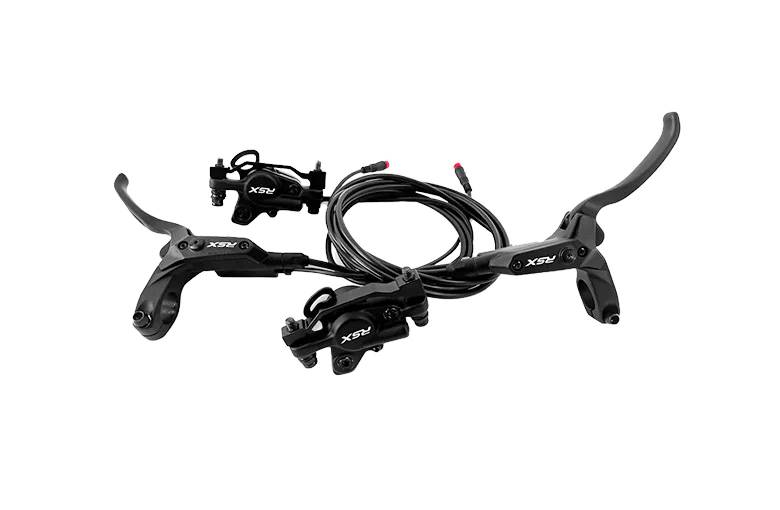If you are an avid cyclist or a biking enthusiast, you know that having reliable and efficient brakes is crucial for your safety and the overall performance of your bike. In recent years, hydraulic brakes have emerged as a popular choice among cyclists looking to enhance their biking experience. In this article, we will delve into the world of hydraulic brakes, exploring their benefits, types, installation process, and much more. So, if you’re considering an upgrade for your bike, keep reading to discover why hydraulic brakes might be the perfect choice for you.
Table of Contents
Understanding Hydraulic Brakes
What are Hydraulic Brakes?
Hydraulic brakes are a type of braking system that uses hydraulic fluid to transmit pressure from the brake lever to the brake mechanism. Unlike traditional mechanical brakes, which rely on cables, hydraulic brakes offer a more direct and responsive braking action.
How do Hydraulic Brakes Work?
When you squeeze the brake lever, it compresses the hydraulic fluid in the brake lines, creating pressure. This pressure is then transmitted to the brake calipers, forcing the brake pads to make contact with the braking surface (either the rim or the disc), thus slowing down or stopping the bike.
Advantages of Hydraulic Brakes
Hydraulic brakes come with several advantages, making them a preferred choice for many cyclists. Some of the key benefits include:
- Improved Braking Power: Hydraulic brakes provide more stopping power with less effort, offering a more controlled and responsive braking experience.
- Better Modulation: The hydraulic system allows for precise control over braking force, making it easier to apply the brakes lightly or come to a sudden stop without skidding.
- Reduced Maintenance: Hydraulic brakes require less maintenance compared to mechanical brakes, as there are no cables that can stretch or get clogged with dirt.
Types of Hydraulic Brakes
Hydraulic Disc Brakes
Hydraulic disc brakes are the most common type and are widely used in mountain biking and other off-road cycling disciplines. They consist of a hydraulic system connected to calipers that grip onto a rotor attached to the wheel hub.
Hydraulic Rim Brakes
Hydraulic rim brakes, also known as hydraulic rim caliper brakes, are less common but still found on some road bikes and hybrid bicycles. These brakes use a hydraulic system to press brake pads directly against the rim of the wheel to slow down or stop the bike.
Choosing the Right Hydraulic Brake System
When considering an upgrade to hydraulic brakes, it’s essential to choose the right system that suits your needs and preferences. Here are some factors to consider:
Consider Your Riding Style
Your riding style and the type of terrain you frequently encounter can influence the type of hydraulic brake system you should choose. For mountain biking and rough terrains, hydraulic disc brakes offer better performance and durability. On the other hand, for road biking, hydraulic rim brakes can be a suitable option.
Budget and Cost
Hydraulic brake systems come in various price ranges. While high-end systems may offer top-notch performance, there are also more affordable options that deliver excellent braking power for recreational cyclists.
Maintenance Requirements
Consider the maintenance needs of the hydraulic brake system you plan to install. Some systems may require more frequent maintenance and bleeding than others.
Compatibility with Your Bike
Ensure that the hydraulic brake system you choose is compatible with your bike’s frame and fork. In some cases, you may need additional adapters or modifications to fit the brakes correctly.
Installation of Hydraulic Brakes
Seeking Professional Help
If you are unsure about installing hydraulic brakes yourself or lack the necessary tools and experience, it’s best to seek professional assistance. A qualified bike mechanic can ensure a safe and proper installation.
DIY Installation Tips
For experienced cyclists and DIY enthusiasts, installing hydraulic brakes can be a rewarding project. Make sure to follow the manufacturer’s instructions carefully and double-check all connections for leaks and proper functionality.
Tips for Maintaining Hydraulic Brakes
To keep your hydraulic brakes in top condition and extend their lifespan, follow these maintenance tips:
Regular Inspections and Cleaning
Perform routine checks on your brake system, inspecting brake pads, rotors, and brake lines for wear or damage. Keep the brakes clean and free from debris.
Brake Pad Replacement
Replace brake pads when they are worn down to ensure optimal braking performance. Worn brake pads can reduce stopping power and potentially damage the rotors.
Bleeding the Brakes
If you notice a decrease in braking performance or sponginess in the brake lever, it might be time to bleed the brake system to remove air bubbles and restore proper functionality.
Upgrading to Hydraulic Brakes: Step-by-Step Guide
Gathering the Necessary Tools and Parts
Before starting the installation, gather all the required tools and parts, including the brake system, compatible with your bike.
Removing Old Brakes
If you are upgrading from mechanical brakes, start by removing the old brake components carefully.
Installing Hydraulic Brakes
Follow the manufacturer’s instructions to install the new hydraulic brake system, ensuring proper alignment and adjustment.
Conclusion
Upgrading to hydraulic brakes can significantly enhance your bike’s performance, providing you with superior stopping power, control, and reliability. Whether you are a mountain biker seeking better off-road performance or a road cyclist looking for improved braking modulation, hydraulic brakes have something to offer for every type of rider. So, if you want to take your biking experience to the next level, consider investing in hydraulic brakes.

